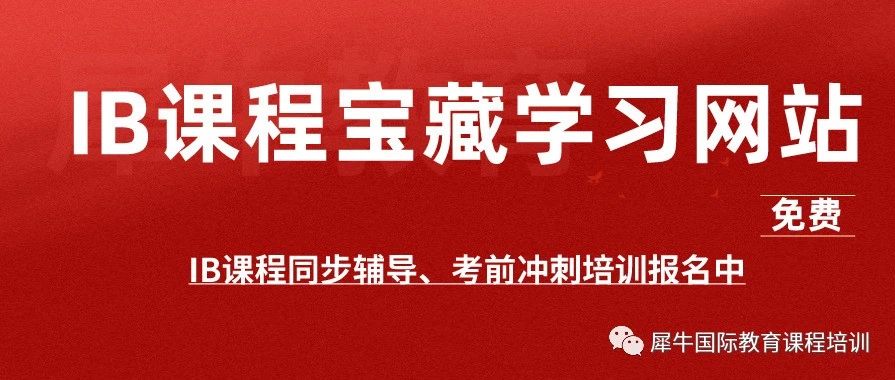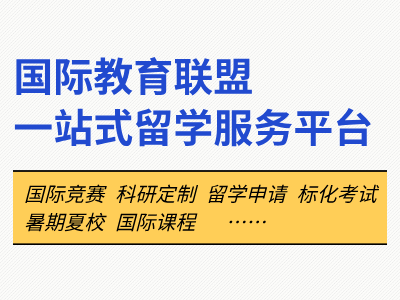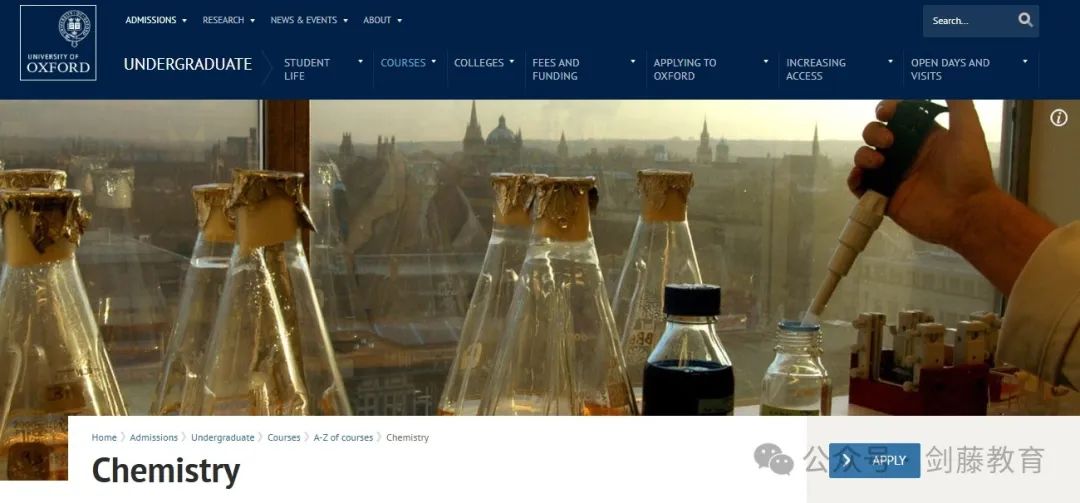上海车展有情况,经济人怎么看?
行业学术视角,经济学生头脑风暴必读
「这次上海车展话题不断,大家热议冰淇淋事件背后的歧视问题,机构还想带着大家追问:车展本身还揭露出了什么样的问题呢?从经济学上看,这次车展还让我们看到什么?让我们来自剑桥经济专业的老师带领大家做最专业的英文解读,文末还有可供参考的头脑风暴问题哦!」
PART 1、初探车展
The Shanghai Auto Show, held this week, has attracted global attention with its dazzling array of innovative electric vehicles, cutting-edge autonomous driving technologies, and of course, a row about ice cream! The event is a testament to the rapid evolution of the automotive industry, spurred by the growing adoption of electric vehicles and the emergence of disruptive technologies. As the world's largest automotive market, China is playing a pivotal role in shaping the industry's future. For students interested in business and technology, the developments showcased at the Shanghai Auto Show provide a fascinating case study in market disruption, strategic competition, and technological advancement. This in-depth analysis will delve into the key factors driving the rise of electric vehicles, the role of the Chinese market, the strategic dynamics between newcomers and legacy manufacturers, and the future outlook and implications for the global automotive industry.
本周举行的上海车展不只有冰淇淋事件的争论,我们更看到,车展上精彩纷呈的创新电动车、尖端的自动驾驶技术,这些都吸引了全球的关注。这次活动显示了汽车行业的快速发展——这是由电动汽车的日益普及和颠覆性技术的出现所刺激的。作为世界上最大的汽车市场,中国在塑造该行业的未来方面正发挥着关键作用。对于对商业和技术感兴趣的学生来说,上海车展上展示的发展为市场颠覆、战略竞争和技术进步提供了一个迷人的案例研究。这一深入分析将深入探讨推动电动汽车崛起的关键因素、中国市场的作用、新进入者和传统制造商之间的战略动态,以及对全球汽车行业的未来展望和影响。
PART 2、深入分析
01、The Emergence of Electric Vehicles - 电动车的兴起
The growing prominence of electric vehicles is a result of several converging factors. Technological advancements in battery energy density, power electronics, and electric motor efficiency have made EVs increasingly viable alternatives to internal combustion engine (ICE) vehicles. Additionally, mounting concerns over climate change and air pollution have spurred governments to introduce stringent emissions regulations and incentives to accelerate the transition to more sustainable modes of transportation.
电动汽车的地位日益突出是几个综合因素的结果。电池能量密度、电力电子技术和电动机效率方面的技术进步,使电动汽车成为内燃机(ICE)汽车越来越可行的替代品。此外,对气候变化和空气污染的日益关注促使各国政府出台了严格的排放法规和激励措施,以加快向更可持续的交通方式过渡。
02、Market Disruption: How the Newcomers Have Overtaken the Incumbents-市场颠覆:新来者如何超越当下
New entrants like Tesla and BYD have disrupted the established automotive value chain by adopting a 机构 Ocean Strategy, which involves creating uncontested market spaces rather than competing in existing markets. They have focused on product differentiation, targeting early adopters, and leveraging first-mover advantages to establish their presence in the electric vehicle market.
像特斯拉和比亚迪这样的“新入场选手”通过采用 "蓝海战略"(创造无争议的市场空间,而不是在现有市场上竞争),颠覆了既定的汽车价值链。他们专注于产品差异化,瞄准早期采用者,并利用先发优势,在电动汽车市场建立自己的地位。
Tesla, for instance, has pursued vertical integration, controlling various aspects of the production process, including battery manufacturing and charging infrastructure. This approach has allowed Tesla to maintain greater control over quality, reduce supply chain risks, and lower production costs. Furthermore, Tesla's innovative business model, which includes direct-to-consumer sales and over-the-air software updates, has enabled the company to streamline its operations and enhance customer experience.
例如,特斯拉追求垂直整合,控制生产过程的各个环节,包括电池制造和充电基础设施。这种方法使特斯拉能够对质量保持更大的控制,减少供应链风险,并降低生产成本。此外,特斯拉的创新商业模式,包括直接面向消费者的销售和空中编程,使该公司能够简化其运营并提高客户体验。
BYD, on the other hand, initially focused on manufacturing rechargeable batteries for various applications, such as mobile phones, consumer electronics, and other portable devices. BYD quickly gained recognition for its high-quality products, becoming one of the largest rechargeable battery manufacturers globally. The company's deep expertise in battery technology provided a solid foundation for its entry into the electric vehicle market. This foundation has also enabled the company to pursue a vertically integrated business model that also enables it to adapt its battery technology for its own cars as well as enjoy cost advantages.
另一方面,比亚迪最初专注于为各种应用制造充电电池,如移动电话、消费电子产品和其他便携式设备。比亚迪的高质量产品迅速获得认可,成为全球最大的可充电电池制造商之一。该公司在电池技术方面的深厚专业知识为其进入电动汽车市场打下了坚实的基础。这一基础也使该公司能够追求垂直整合的商业模式,也使其能够为自己的汽车调整电池技术,以及享受成本优势。
03、The Role of the Chinese Market and Chinese Manufacturers -中国市场与中国制造商
China's importance in the global automotive industry, particularly the electric vehicle segment, cannot be understated. As the world's largest automotive market, China presents a significant growth opportunity for both domestic and international manufacturers. The Chinese government's proactive stance in promoting the adoption of electric vehicles through policies, incentives, and subsidies has created a favourable environment for the growth of EV manufacturers like BYD.
中国在全球汽车行业,特别是电动汽车领域的重要性是不可低估的。作为世界上最大的汽车市场,中国为国内和国际制造商提供了一个重要的增长机会。中国政府通过政策、激励措施和补贴来促进电动汽车的采用,为比亚迪等电动汽车制造商的发展创造了有利的环境。
In the past, Chinese automobile manufacturers faced challenges in catching up with legacy manufacturers in the internal combustion engine (ICE) car market. However, some astute Chinese companies recognized the emerging trend of electric vehicles (EVs) and made a strategic decision to pivot and focus on EV technology. This decision allowed them to bypass the need to catch up on ICE technology and instead concentrate on the rapidly growing and increasingly competitive EV market.
过去,中国汽车制造商在追赶内燃机(ICE)汽车市场的传统制造商方面面临挑战。然而,一些精明的中国公司认识到了电动汽车(EV)的新兴趋势,并做出了一个战略决策,即转向并专注于EV技术。这一决定使他们能够绕过追赶内燃机技术的需要,转而专注于快速增长且竞争日益激烈的电动车市场。
Several factors have contributed to the success of Chinese manufacturers who chose to focus on EV technology:
让我们一起来看是哪些个因素促成了电动车技术的中国制造商的成功:
01
Early Investment in EV Technology: By prioritizing the development of EV technology over ICE, these manufacturers were able to allocate their resources, research, and development efforts towards creating innovative and competitive electric vehicles. This early investment enabled them to refine their EV technologies and gain a competitive edge in the market.
对电动车技术的早期投资:通过优先发展电动车技术而不是内燃机车,这些制造商能够将他们的资源、研究和开发工作分配到创造创新和有竞争力的电动车上。这种早期投资使他们能够完善其电动车技术,并在市场上获得竞争优势。
02
Cost Advantage: Chinese manufacturers have been able to leverage the lower production and labor costs in China to produce more affordable electric vehicles. This cost advantage has allowed them to offer competitively priced EVs, making them more accessible to a wider consumer base and enabling them to capture a larger market share.
成本优势:中国制造商已经能够利用中国较低的生产和劳动力成本,生产出更多价格低廉的电动汽车。这种成本优势使他们能够提供具有价格竞争力的电动车,使其更容易被更多的消费者所接受,并使他们能够占领更大的市场份额。
03
Market Opportunity: Recognizing the potential of the EV market, Chinese manufacturers have been able to capitalize on the growing demand for electric vehicles in both domestic and international markets. By focusing on EV technology, they have been able to target a rapidly expanding market segment, creating a unique competitive advantage over legacy manufacturers who may still be heavily invested in ICE vehicles.
市场机遇:认识到电动车市场的潜力,中国制造商已经能够利用国内和国际市场上对电动车日益增长的需求。通过专注于电动车技术,他们已经能够瞄准一个迅速扩大的细分市场,与那些可能仍然大量投资于内燃机汽车的传统制造商相比,创造出独特的竞争优势。
2023年的BYD
04
Strategic Partnerships and Collaborations: Chinese EV manufacturers have forged strategic partnerships with technology companies, suppliers, and other automakers to accelerate their development of electric vehicles and expand their market reach. These collaborations have allowed them to access advanced technologies, share research and development costs, and enhance their competitive position.
战略伙伴关系和合作:中国的电动车制造商已经与技术公司、供应商和其他汽车制造商建立了战略伙伴关系,以加快他们的电动车开发,扩大他们的市场范围。这些合作使他们能够获得先进的技术,分享研究和开发成本,并提高他们的竞争地位。
By choosing to focus on EV technology and bypass the need to catch up with legacy manufacturers in the ICE car market, Chinese manufacturers such as BYD, NIO, and XPeng have been able to surpass their competitors and establish themselves as leaders in the global electric vehicle market. This strategic decision has proven to be a successful approach, positioning them for long-term growth and success in the rapidly evolving automotive industry.
通过选择专注于电动车技术,绕过在内燃机汽车市场上追赶传统制造商的需要,中国制造商如比亚迪、NIO和新普京已经能够超越他们的竞争对手,并在全球电动车市场上确立自己的领先地位。这一战略决策的确是一个成功的方法,因而这些企业也在快速发展的汽车行业中获得长期增长和成功。
04、The Challenges Faced by Legacy Manufacturers and Their Response-传统制造商的挑战和回应
Legacy automotive manufacturers face several challenges as they navigate the rapidly evolving EV market. These include the need for strategic realignment, resource allocation, and managing the complexities of transitioning from ICE to EV production. To address these challenges, incumbents must adopt an ambidextrous approach, balancing the exploration of new opportunities with the exploitation of their existing resources and capabilities.
传统的汽车制造商在驾驭快速发展的电动车市场时面临着几个挑战。这些挑战包括需要进行战略调整,资源分配,以及管理从内燃机车过渡到电动车生产的复杂问题。为了应对这些挑战,现有的制造商必须采取一种双管齐下的方法,在探索新机会和利用现有资源和能力之间取得平衡。
One strategy for legacy manufacturers is to form strategic alliances and joint ventures to pool resources, share risks, and accelerate the development and deployment of EV technologies. Furthermore, they can leverage their existing brand equity, distribution networks, and customer relationships to facilitate a smoother transition to electric vehicles.
传统制造商的一个策略是建立战略联盟和合资企业,以集中资源,分担风险,并加快电动车技术的开发和部署。此外,他们可以利用现有的品牌资产、分销网络和客户关系,促进向电动汽车的顺利过渡。
PART 3、未来前景
2003年的BYD —— 和现在差别有多大?
Future Outlook & Implications
未来展望和影响
The continued growth of the electric vehicle market will have far-reaching implications for the automotive industry and related sectors. As the industry moves towards greater electrification, the development of charging infrastructure and integration of renewable energy sources into the grid will become increasingly important. Additionally, the evolving market dynamics may lead to industry consolidation, as companies seek to achieve synergies and enhance their competitive positioning.
电动汽车市场的持续增长将对汽车行业和相关部门产生深远的影响。随着该行业向更大的电气化发展,充电基础设施的发展和可再生能源与电网的整合将变得越来越重要。此外,不断变化的市场动态可能会导致行业整合,因为各公司都在寻求实现协同效应并增强其竞争定位。
The advent of autonomous vehicle technology presents further opportunities and challenges for both legacy manufacturers and new entrants, necessitating cross-industry collaboration and regulatory adaptation. To succeed in this rapidly evolving landscape, stakeholders across the industry must foster a culture of innovation, embrace digital transformation, and prioritize sustainability.
自动驾驶汽车技术的出现为传统制造商和新进入者带来了更多的机会和挑战,需要跨行业合作和监管调整。为了在这个快速发展的环境中取得成功,整个行业的利益相关者必须培养一种创新文化,拥抱数字转型,并优先考虑可持续性。
As the electric vehicle market continues to mature, the automotive industry will likely witness increased competition among manufacturers, suppliers, and service providers. This competitive environment will drive further innovation in areas such as battery technology, lightweight materials, and vehicle connectivity. In turn, these advancements will contribute to the development of more efficient, affordable, and environmentally friendly transportation solutions.
随着电动汽车市场的不断成熟,汽车行业可能会看到制造商、供应商和服务提供商之间的竞争加剧。这种竞争环境将推动电池技术、轻质材料和车辆连接等领域的进一步创新。反过来,这些进步将有助于开发更高效、更实惠、更环保的交通解决方案。
Moreover, the growth of the electric vehicle market will have implications for workforce development, as the demand for new skills and expertise in areas such as battery technology, electric drivetrains, and software development increases. Companies and governments will need to invest in education and training programs to ensure that the workforce is equipped with the necessary skills to support the transition to electric vehicles.
此外,电动汽车市场的增长将对劳动力发展产生影响,因为对电池技术、电动传动系统和软件开发等领域的新技能和专业知识的需求增加。公司和政府将需要投资于教育和培训项目,以确保劳动力配备必要的技能,以支持向电动汽车的过渡。
Conclusion
小结
In conclusion, the transition to electric vehicles represents a significant opportunity and challenge for the global automotive industry. Newcomers like Tesla and BYD have disrupted the market by leveraging innovation, strategic partnerships, and unique business models, while legacy manufacturers must adapt and evolve to remain competitive. The continued growth of the electric vehicle market will have far-reaching implications for the automotive industry, related sectors, and the broader global economy. By embracing innovation, fostering collaboration, and prioritizing sustainability, industry stakeholders can contribute to a cleaner, more efficient, and environmentally friendly transportation system for the future.
总之,向电动汽车的过渡对全球汽车行业来说是一个重大的机遇和挑战。像特斯拉和比亚迪这样的新来者通过利用创新、战略伙伴关系和独特的商业模式扰乱了市场,而传统的制造商必须适应和发展以保持竞争力。电动汽车市场的持续增长将对汽车行业、相关行业和更广泛的全球经济产生深远影响。通过拥抱创新、促进合作和优先考虑可持续发展,行业利益相关者可以为未来更清洁、更高效和更环保的运输系统做出贡献。
PART 4、头脑风暴
老师还为同学们准备了可供思考、讨论的问题,来看看这些经济学的头脑风暴练习你能否回答一些?
Follow up questions to consider:
1.How might legacy automotive manufacturers adapt their business strategies to compete more effectively in the rapidly evolving EV market?
2.How can legacy manufacturers leverage their existing resources, brand recognition, and customer base to accelerate their transition to electric vehicles?
3.What potential challenges do Chinese EV manufacturers face as they seek to expand their presence in global markets, and how can they overcome these obstacles?
4.How might the development of autonomous vehicle technology impact the competitive landscape for electric vehicles, and what opportunities does this present for both legacy manufacturers and new entrants?
5.In what ways could further advancements in battery technology, charging infrastructure, and renewable energy integration shape the future of the EV market and its competitive dynamics?
6.How might the growth of the EV market impact other industries, such as public transportation, energy production, and urban planning, and what opportunities might this create for collaboration between stakeholders?
1.传统的汽车制造商如何调整他们的商业战略,以便在快速发展的电动车市场中更有效地竞争?
2.传统制造商如何利用他们现有的资源、品牌知名度和客户群来加速向电动汽车过渡?
3.中国的电动汽车制造商在寻求扩大其在全球市场的影响力时面临哪些潜在的挑战,以及他们如何克服这些障碍?
4.自动驾驶汽车技术的发展如何影响电动汽车的竞争格局,这对传统制造商和新进入者来说有什么机会?
5.电池技术、充电基础设施和可再生能源整合方面的进一步进步会以何种方式塑造电动汽车市场的未来及其竞争态势?
6.电动车市场的增长可能会对其他行业产生什么影响,例如公共交通、能源生产和城市规划,以及这可能为利益相关者之间的合作创造什么机会?












